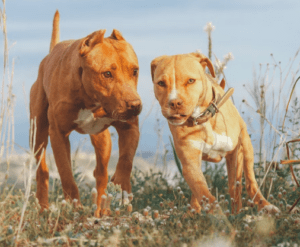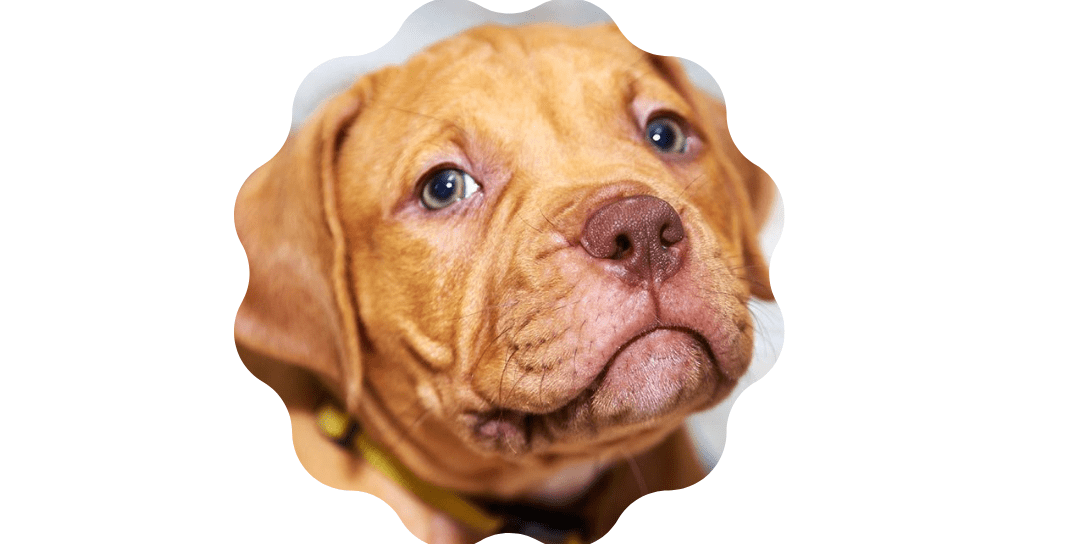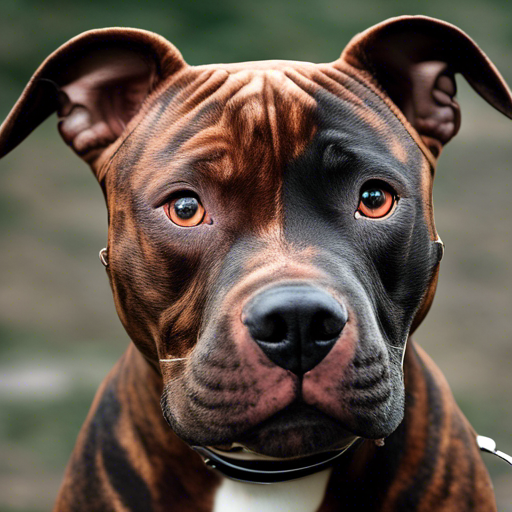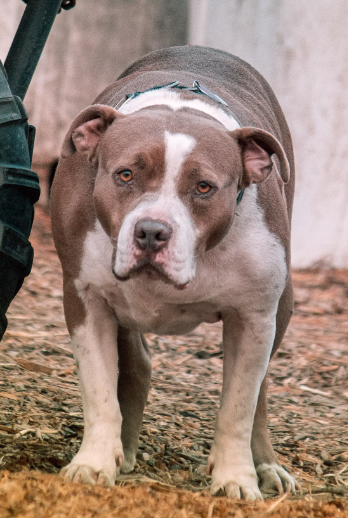Red Nose Pitbulls: Everything You Need to Know

Introduction to Red Nose Pitbulls
Red Nose Pitbulls, often simply referred to as “Red Noses,” are a fascinating breed with a rich history. Originating from the United States, these dogs have gained significant popularity worldwide for their distinctive appearance and loyal nature. Understanding the essence of this breed requires delving into its historical background and recognizing its modern-day significance.
Red Nose Pitbull Characteristics
When it comes to Red Nose Pitbulls, their characteristics are as intriguing as they are unique. From their physical appearance, marked by their iconic red noses, to their behavioral traits, which include remarkable intelligence and loyalty, these dogs stand out among their peers in the canine world.
Red Nose Pitbulls possess a unique set of characteristics that make them stand out among dog breeds. From their distinctive appearance to their loyal and affectionate nature, these dogs have a lot to offer to their owners.
Distinctive Features
One of the most striking features of Red Nose Pitbulls is, of course, their namesake red noses. This distinguishing characteristic sets them apart from other Pitbull variations and adds to their allure. Additionally, they often have muscular builds and athletic bodies, reflecting their strength and agility.
Size and Build
Red Nose Pitbulls are typically medium to large-sized dogs, with males generally being larger and heavier than females. They have well-defined muscles and a powerful stature, reflecting their ancestry as working dogs. Despite their muscular appearance, they are agile and graceful in their movements.
Behavioral Traits
Beyond their physical attributes, Red Nose Pitbulls are known for their remarkable behavioral traits. Despite their often intimidating appearance, they are incredibly affectionate and loyal towards their families. They form strong bonds with their human companions and are known to be excellent family pets.
Temperament
Contrary to misconceptions perpetuated by their reputation, Red Nose Pitbulls are often gentle and loving dogs. They are known for their affection towards children and can be incredibly protective of their families. With proper training and socialization, they exhibit stable temperaments and are well-behaved in various situations.
Intelligence and Trainability
Red Nose Pitbulls are highly intelligent dogs with a strong desire to please their owners. This intelligence, coupled with their eagerness to learn, makes them highly trainable. They excel in obedience training and thrive when given mental stimulation tasks. Consistent and positive reinforcement methods are key to unlocking their full potential as obedient and well-mannered pets.
In summary, Red Nose Pitbulls possess a winning combination of distinctive physical features and admirable behavioral traits. Their loyalty, affection, and intelligence make them beloved companions for individuals and families alike.
Health Concerns with Red Nose Pitbulls
While Red Nose Pitbulls are generally healthy dogs, like all breeds, they are susceptible to certain health issues. From genetic predispositions to common ailments, it’s essential for owners to be aware of potential health concerns and take proactive measures to ensure their pet’s well-being.
Common Health Issues
Red Nose Pitbulls may be predisposed to certain genetic health conditions, including hip dysplasia, which affects the hip joints and can lead to pain and mobility issues. They may also be susceptible to skin allergies and infections, which can cause discomfort and require ongoing management. Additionally, like many large breeds, they may be prone to bloat, a serious and potentially life-threatening condition characterized by stomach twisting.
Genetic Predispositions
Due to their breeding history and genetics, Red Nose Pitbulls may inherit certain health conditions from their parents. Responsible breeders perform health screenings on their breeding dogs to minimize the risk of passing on genetic disorders. It’s essential for prospective owners to inquire about the health history of the puppy’s parents before making a commitment.
Care and Prevention
Proactive care and preventive measures are crucial for maintaining the health of Red Nose Pitbulls. This includes providing a balanced diet tailored to their nutritional needs, regular exercise to maintain a healthy weight and promote joint health, and routine veterinary check-ups to monitor for any signs of illness or underlying health issues.
Lifespan Expectancy
With proper care and attention to their health needs, Red Nose Pitbulls can live long and fulfilling lives. On average, they have a lifespan of around 12 to 14 years, although individual longevity may vary depending on factors such as genetics, diet, exercise, and overall health care.
In conclusion, while Red Nose Pitbulls are generally healthy dogs, it’s essential for owners to be proactive in addressing potential health concerns. By staying informed about common health issues, maintaining a healthy lifestyle for their pets, and seeking prompt veterinary care when needed, owners can help ensure that their Red Nose Pitbulls enjoy happy and healthy lives.
Caring for a Red Nose Pitbull
Proper care and attention are crucial for the overall health and happiness of Red Nose Pitbulls. This includes providing a balanced diet, regular exercise, and grooming sessions tailored to their specific needs.
Taking care of a Red Nose Pitbull involves more than just providing food and shelter. These loyal and affectionate dogs require attentive care and consideration to ensure their physical and emotional well-being. Here are some essential aspects to consider when caring for a Red Nose Pitbull:
Diet and Nutrition
A balanced diet is essential for maintaining the health and vitality of a Red Nose Pitbull. Choose high-quality dog food formulated for their specific breed and life stage, whether puppy, adult, or senior. Ensure that their diet includes a proper balance of protein, carbohydrates, fats, vitamins, and minerals. Avoid overfeeding to prevent obesity, which can lead to various health issues.
Exercise Requirements
Red Nose Pitbulls are energetic and athletic dogs that require regular exercise to stay healthy and happy. Aim for at least 30 to 60 minutes of physical activity each day, such as brisk walks, jogging, or interactive play sessions. Engaging in activities like fetch or agility training can provide both mental stimulation and physical exercise.
Grooming Needs
While Red Nose Pitbulls have short coats that are easy to maintain, they still require regular grooming to keep them clean and healthy. Brush their coat weekly to remove loose hair and minimize shedding. Bathe them as needed, using a mild dog shampoo to avoid stripping their skin of natural oils. Trim their nails regularly to prevent overgrowth and discomfort.
Regular Vet Check-ups
Routine veterinary care is essential for monitoring the health of your Red Nose Pitbull and addressing any potential issues promptly. Schedule annual wellness exams with your veterinarian, during which they can perform physical examinations, administer vaccinations, and discuss preventive care measures. Stay up-to-date on parasite control, including flea, tick, and heartworm prevention.
Socialization and Training
Early socialization and obedience training are crucial for Red Nose Pitbulls to become well-adjusted and well-behaved companions. Expose them to various people, animals, and environments from a young age to help prevent behavioral issues later in life. Use positive reinforcement techniques, such as treats and praise, to reinforce desired behaviors and discourage unwanted ones.
Love and Attention
Above all, Red Nose Pitbulls thrive on love and attention from their owners. Spend quality time bonding with your dog through play, training, and cuddles. Provide them with plenty of mental stimulation and enrichment activities to prevent boredom and keep their minds sharp. Remember that a happy and fulfilled Pitbull is a healthy Pitbull.
By providing proper care and attention to their diet, exercise, grooming, veterinary needs, and socialization, you can ensure that your Red Nose Pitbull lives a fulfilling and healthy life as a beloved member of your family.
Origins of Red Nose Pitbulls
The origins of Red Nose Pitbulls trace back to the early days of the breed’s development in the United States. Through selective breeding and careful selection, the distinct red nose strain emerged, contributing to the breed’s unique charm and appeal.
The origins of Red Nose Pitbulls can be traced back to the early days of the Pitbull breed in the United States. To understand the history of these distinctive dogs, it’s essential to delve into the roots of the broader Pitbull lineage and how the Red Nose strain emerged.
Historical Roots
Pitbulls, originally bred in England, were brought to America in the 19th century for various purposes, including farm work, hunting, and as family companions. These dogs were prized for their strength, agility, and loyalty, qualities that made them well-suited for a variety of tasks.
As the Pitbull breed developed in the United States, breeders selectively bred dogs with desired traits, including athleticism, intelligence, and trainability. Over time, certain bloodlines emerged, each with its own distinct characteristics and physical features.
Development of the Red Nose Strain
The term “Red Nose” refers to a specific bloodline within the broader Pitbull breed, characterized by dogs with red or copper-colored noses. While the exact origins of the Red Nose strain are debated, it is believed to have originated from Irish Terriers and Old English Bulldogs imported to America in the 19th century.
Selective breeding among these dogs, particularly those with red noses, led to the development of a distinct lineage known for its unique appearance and temperament. The Red Nose Pitbulls gained recognition for their striking features and soon became a sought-after variation within the Pitbull community.
Significance in Modern Times
Today, Red Nose Pitbulls continue to hold a special place in the hearts of dog enthusiasts and breed enthusiasts alike. While their historical roots are firmly planted in the working-class communities of America, they have also found popularity as beloved family pets and companions.
Despite misconceptions and stereotypes surrounding Pitbull breeds, including Red Noses, responsible ownership and advocacy have helped showcase their true nature as loyal, affectionate, and gentle dogs. Understanding the origins of Red Nose Pitbulls provides insight into their unique heritage and contributes to a deeper appreciation for these remarkable canine companions.
Risks Associated with Red Nose Pitbulls
Despite their loving nature, Red Nose Pitbulls face certain risks, including misconceptions and legal restrictions. Understanding these challenges is essential for responsible ownership and advocating for the breed’s positive reputation.
Training a Red Nose Pitbull
Training is an integral part of owning a Red Nose Pitbull, given their intelligence and energetic nature. Effective training methods and early socialization play a crucial role in shaping a well-behaved and balanced dog.
Training a Red Nose Pitbull is an essential aspect of responsible ownership and can contribute to a harmonious relationship between you and your dog. These intelligent and energetic dogs thrive on mental stimulation and positive reinforcement, making them highly trainable companions. Here are some tips for effectively training your Red Nose Pitbull:
Effective Training Methods
When it comes to training your Red Nose Pitbull, positive reinforcement techniques are key. This involves rewarding desired behaviors with treats, praise, or playtime, while ignoring or redirecting unwanted behaviors. Consistency and patience are crucial, as dogs learn best through repetition and reinforcement.
Start Early and Be Consistent
Begin training your Red Nose Pitbull as soon as you bring them home, ideally during puppyhood when they are most receptive to learning. Establish a consistent routine and set clear rules and expectations from the start. Use the same commands and cues consistently to avoid confusion and reinforce good behavior.
Socialization Importance
Socialization is a critical aspect of training for Red Nose Pitbulls. Expose them to various people, animals, environments, and experiences from a young age to help them develop confidence and adaptability. Positive interactions with other dogs and humans can help prevent fearfulness or aggression later in life.
Basic Obedience Commands
Teach your Red Nose Pitbull basic obedience commands such as sit, stay, come, and down. Use positive reinforcement to reward them when they respond correctly to commands, gradually increasing the level of difficulty as they progress. Consistent practice and repetition are key to mastering obedience skills.
Addressing Behavioral Issues
If your Red Nose Pitbull exhibits undesirable behaviors such as jumping, pulling on the leash, or excessive barking, address these issues promptly and consistently. Use positive reinforcement techniques to redirect their behavior towards more appropriate alternatives. Consider seeking guidance from a professional dog trainer or behaviorist if needed.
Building Trust and Bonding
Training sessions provide valuable opportunities to strengthen the bond between you and your Red Nose Pitbull. Use training as a way to build trust, communication, and mutual respect. Be patient, understanding, and supportive throughout the training process, and celebrate progress together as a team.
In conclusion, training a Red Nose Pitbull requires patience, consistency, and positive reinforcement. By starting early, being consistent, socializing effectively, teaching basic obedience commands, addressing behavioral issues promptly, and focusing on building trust and bonding, you can help your Red Nose Pitbull become a well-behaved and well-adjusted companion.
Understanding Red Nose Pitbull Temperament
Contrary to popular belief, Red Nose Pitbulls exhibit friendly and affectionate temperaments, especially towards their families. Their innate loyalty and gentle demeanor make them excellent companions for individuals and families alike.
Contrary to misconceptions perpetuated by their reputation, Red Nose Pitbulls are often misunderstood when it comes to their temperament. In reality, these dogs possess a gentle and affectionate nature, characterized by loyalty, intelligence, and a strong desire to please their owners. Understanding the true temperament of Red Nose Pitbulls is essential for dispelling myths and fostering positive relationships with these remarkable canine companions.
Myth vs. Reality
One of the most common misconceptions about Red Nose Pitbulls is that they are inherently aggressive or dangerous. This stereotype is rooted in misinformation and sensationalized media portrayals, rather than actual observations of the breed’s behavior. In reality, Red Nose Pitbulls are known for their loving and gentle disposition towards humans, especially when properly trained and socialized from a young age.
Family Friendliness
Red Nose Pitbulls are renowned for their affectionate and loyal nature, making them excellent family pets. They form strong bonds with their human companions and often exhibit a natural instinct to protect and care for their loved ones. With proper socialization and training, they can coexist harmoniously with children and other pets in the household, providing companionship and unwavering devotion.
Positive Traits
Beyond their loyalty and affection, Red Nose Pitbulls possess a range of positive traits that endear them to their owners. They are highly intelligent dogs, capable of learning and mastering a variety of tasks and commands. Their eagerness to please makes them responsive to training and eager to participate in activities with their families.
Stability and Reliability
Despite their muscular build and powerful appearance, Red Nose Pitbulls are known for their stable and reliable temperament. They exhibit confidence and self-assurance, yet remain calm and composed in various situations. This balanced demeanor makes them well-suited for various roles, including therapy dogs, service animals, and loyal companions.
In summary, understanding the true temperament of Red Nose Pitbulls is essential for appreciating their unique qualities and dispelling misconceptions. These dogs are not inherently aggressive or dangerous; rather, they are loving, loyal, and affectionate companions with a strong desire to please their owners. With proper training, socialization, and responsible ownership, Red Nose Pitbulls can thrive as valued members of the family, bringing joy, companionship, and unwavering loyalty to their human counterparts.
Red Nose Pitbull Price
The cost of a Red Nose Pitbull can vary depending on various factors, including lineage, pedigree, and breeder reputation. While price is a consideration, finding a reputable breeder who prioritizes the health and well-being of their dogs is paramount.
Variety in Red Nose Pitbull Coat Colors
Red Nose Pitbulls come in a range of coat colors, each adding to their individual charm. Understanding the genetics behind these variations can help owners appreciate the diversity within the breed.
Intelligence and Playfulness of Red Nose Pitbulls
Red Nose Pitbulls are not only intelligent but also incredibly playful. Providing adequate mental stimulation and engaging playtime activities is essential for their overall happiness and well-being.
American Pitbull Terrier (APBT)
While often confused with Red Nose Pitbulls, the American Pitbull Terrier (APBT) is a distinct breed with its own set of characteristics. Understanding the differences between the two breeds is essential for potential owners.
Health Problems in Pitbulls
Pitbulls, including Red Noses, are prone to certain health problems, ranging from skin issues to joint ailments. Regular veterinary check-ups and proactive healthcare measures are crucial for maintaining their quality of life.
Understanding Pitbull Insurance
Given the potential health risks associated with Pitbull breeds, investing in pet insurance can provide peace of mind for owners. Understanding the importance of insurance coverage and choosing the right policy is essential for safeguarding against unexpected medical expenses.
Spot Pet Insurance: A Reliable Option
Spot Pet Insurance stands out as a reliable option for Pitbull owners seeking comprehensive coverage for their beloved pets. With customizable plans and a focus on pet wellness, Spot Pet Insurance offers peace of mind for responsible pet ownership.
Conclusion
In conclusion, Red Nose Pitbulls are not only unique in their appearance but also in their loving and loyal nature. Understanding their characteristics, health concerns, and care needs is essential for potential owners to provide the best possible life for these wonderful companions.
Frequently Asked Questions
1. Are Red Nose Pitbulls aggressive?
Red Nose Pitbulls are not inherently aggressive. Like all breeds, their temperament is influenced by factors such as genetics, upbringing, and socialization.
2. How much exercise does a Red Nose Pitbull need?
Red Nose Pitbulls are energetic dogs that require regular exercise to stay healthy and happy. Daily walks, playtime, and mental stimulation are essential for their well-being.
3. What is the average lifespan of a Red Nose Pitbull?
On average, Red Nose Pitbulls live between 12 to 14 years with proper care and attention to their health needs.
4. Do Red Nose Pitbulls make good family pets?
Yes, Red Nose Pitbulls are known for their affectionate and gentle nature






